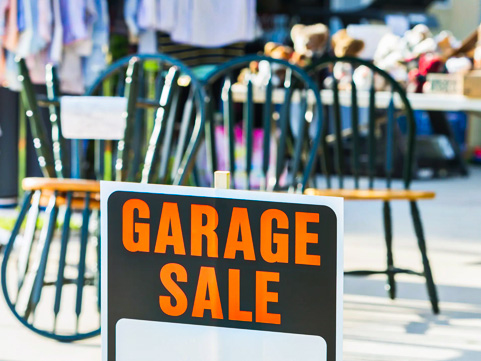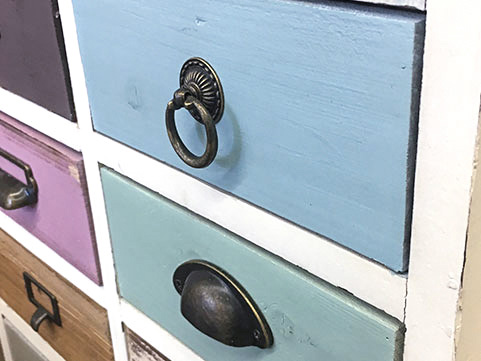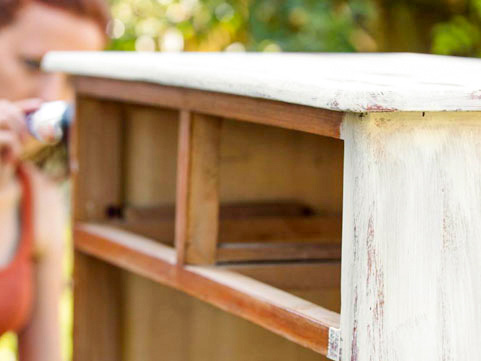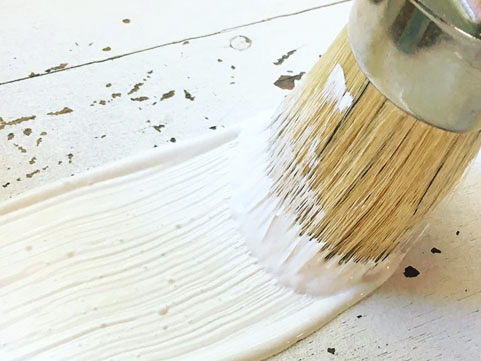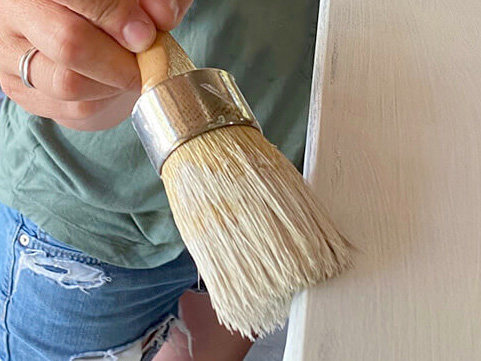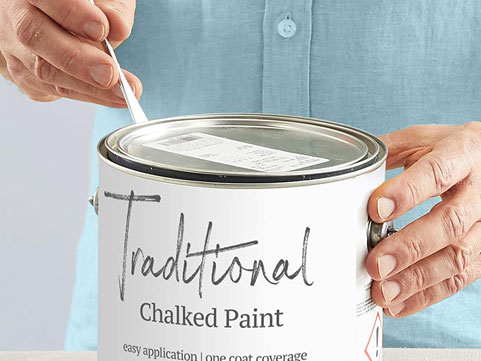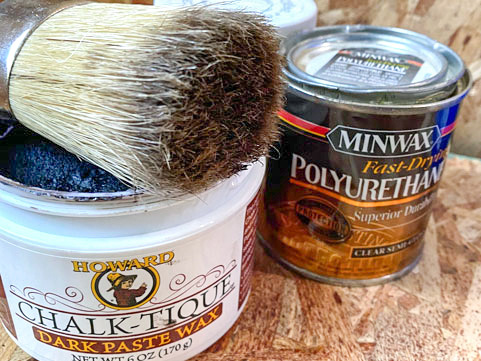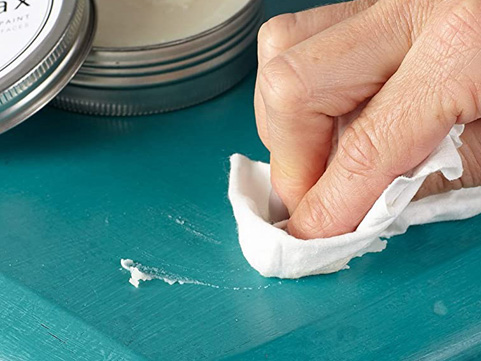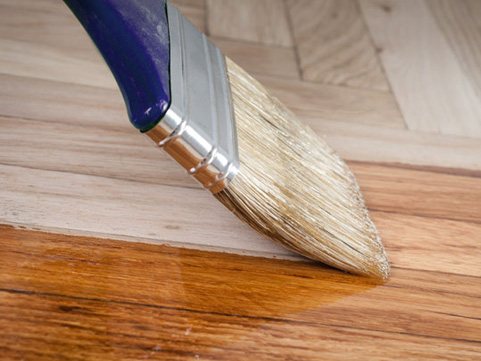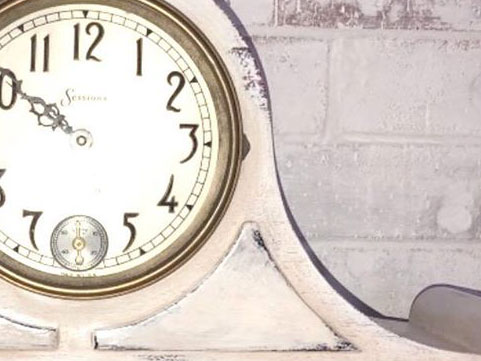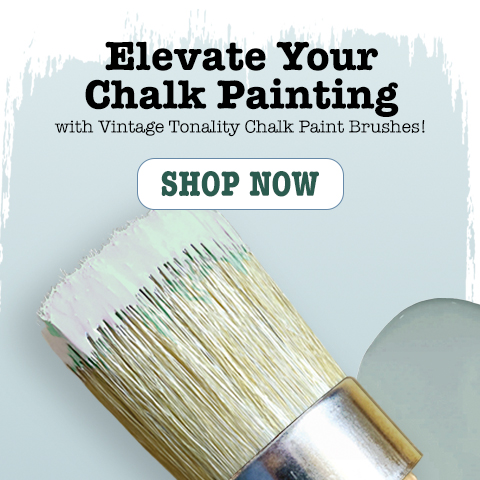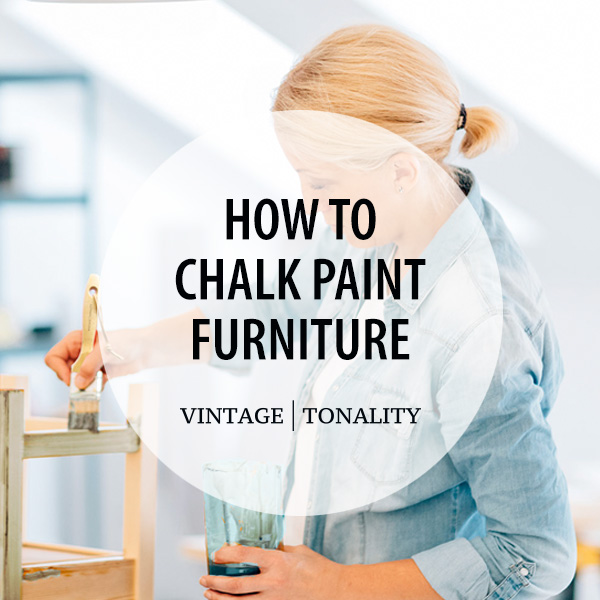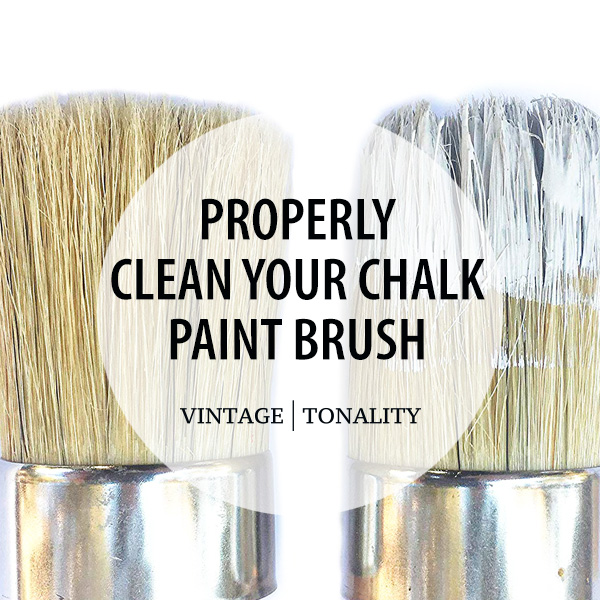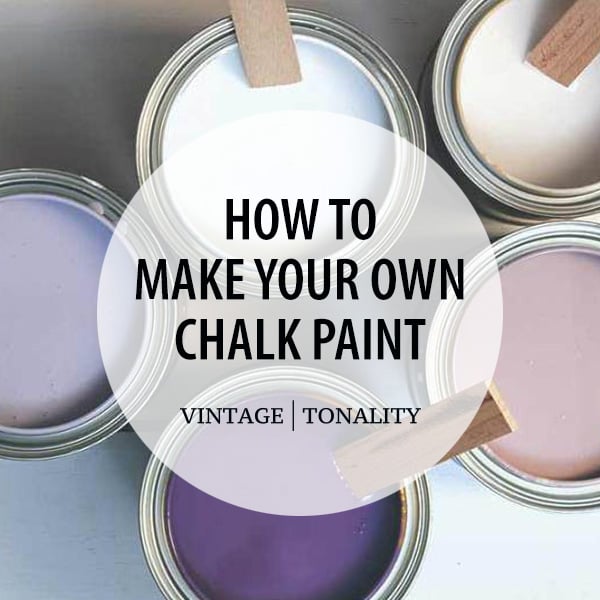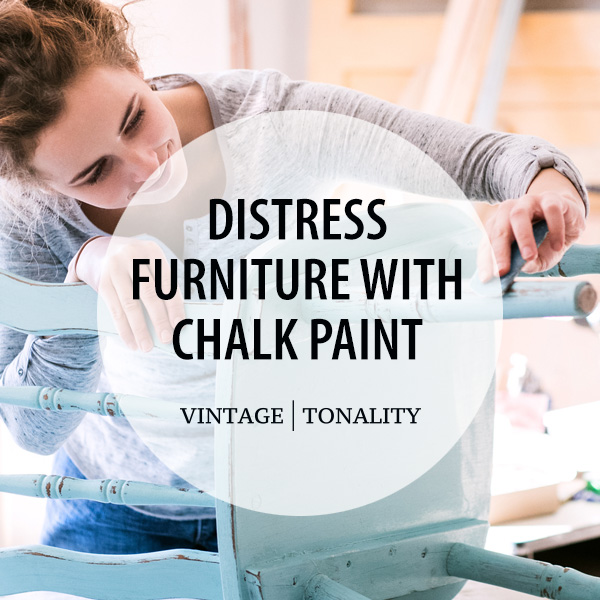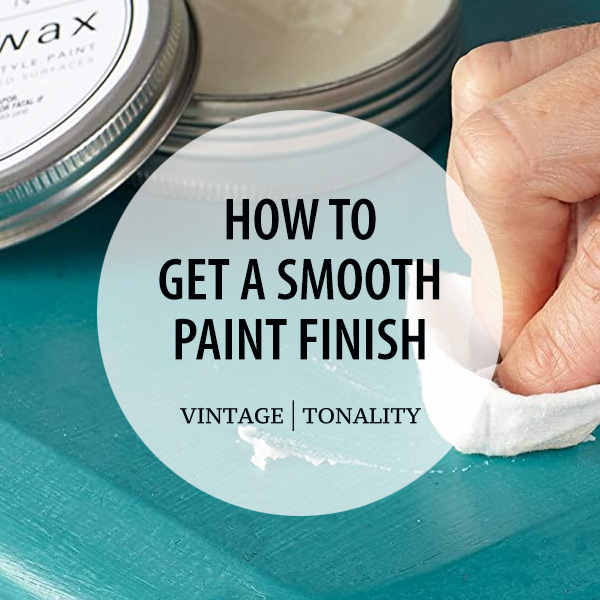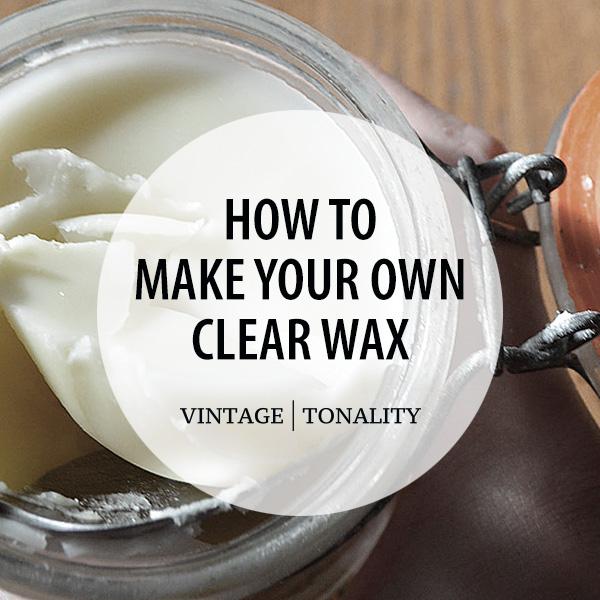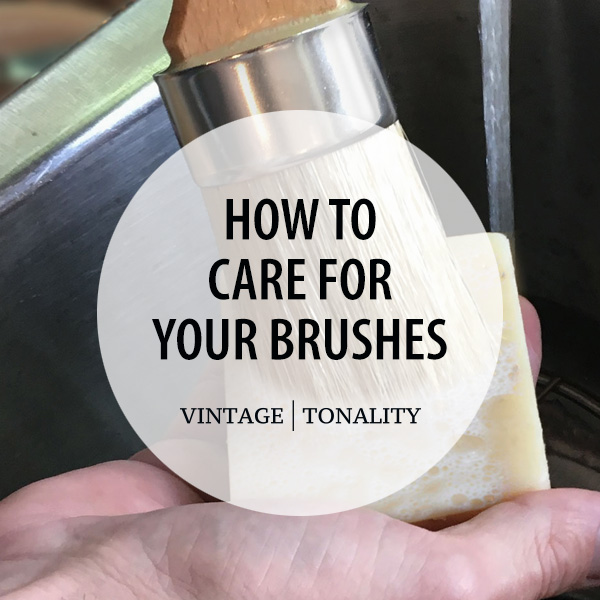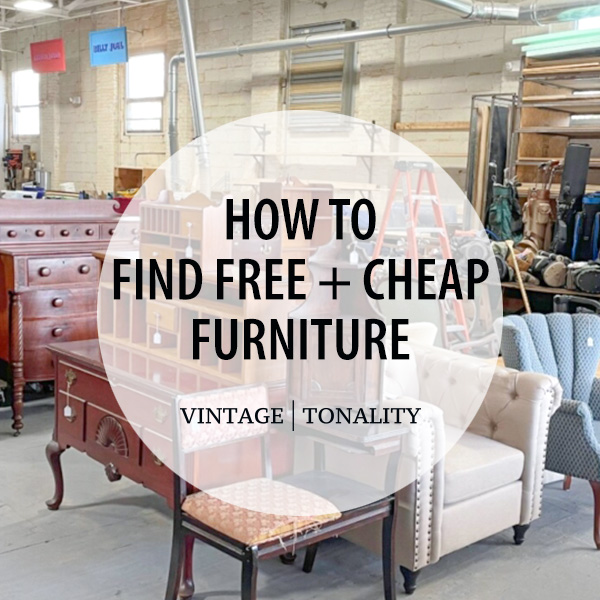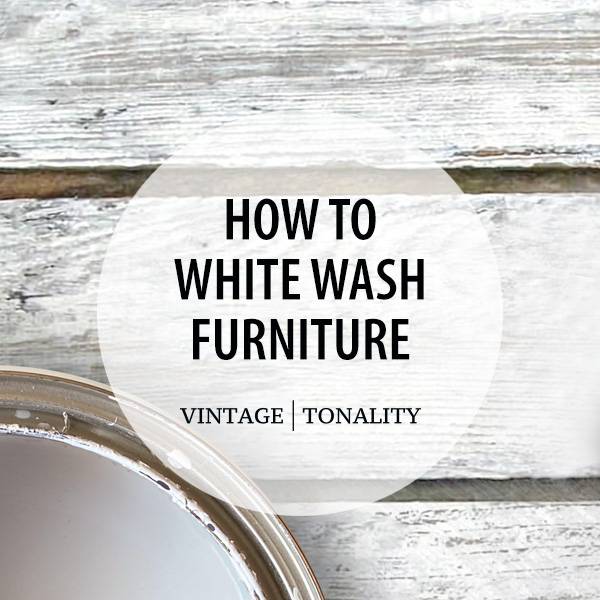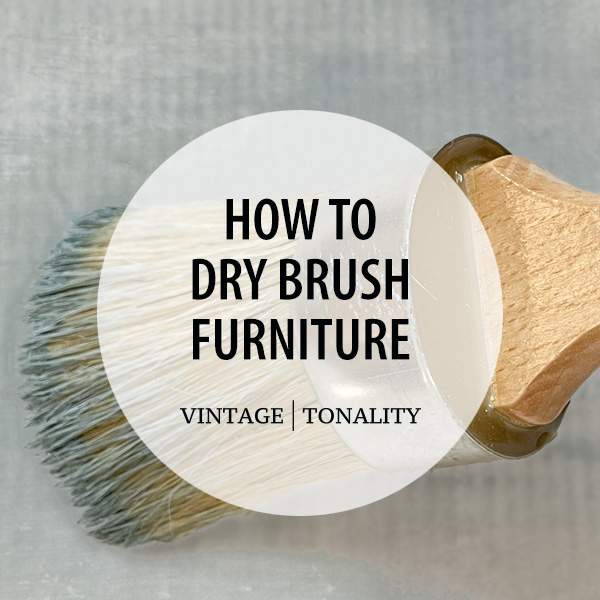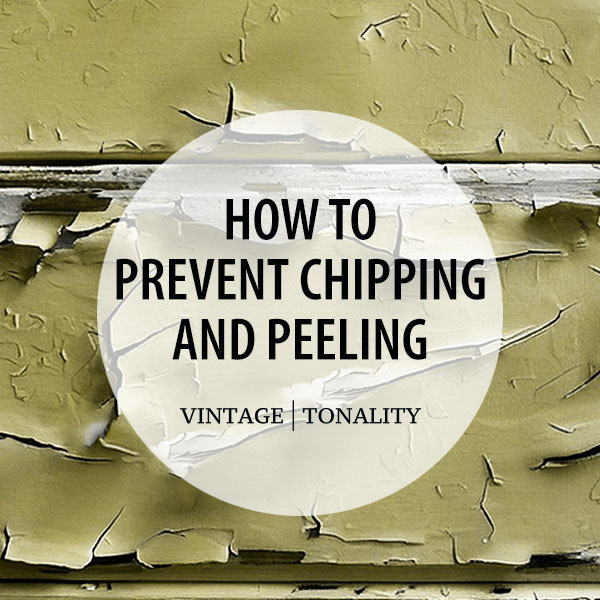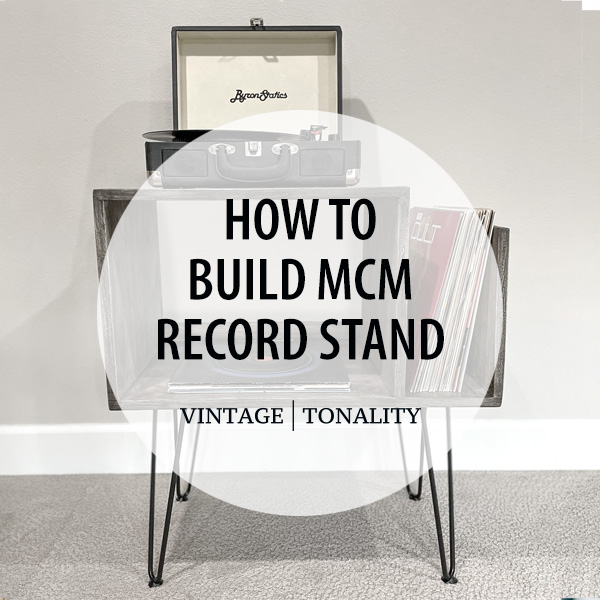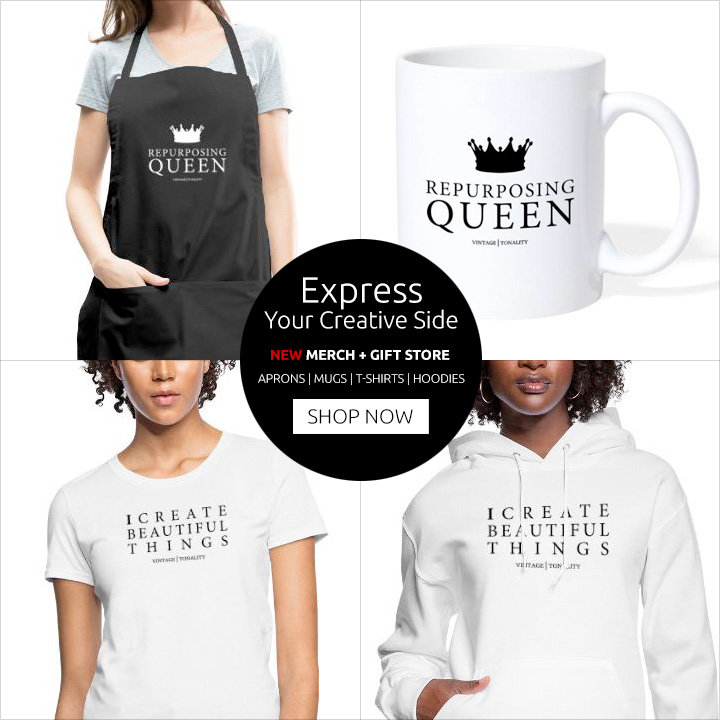Chalk Painting BasicsThe Beginner’s 101 Guide To Painting Furniture With Chalk Paint
These easy to follow chalk painting tips for beginners will provide you with a better understanding of the process and get you started on the creative journey of painting furniture with chalk paint.
These easy to follow chalk painting tips for beginners will provide you with a better understanding of the process and get you started on the creative journey of painting furniture with chalk paint.

What Is: Chalk Paint
- Chalk paint can be used on a variety of surfaces, including wood, metal, upholstery, and ceramic.
- It can be used to create a variety of finishes, including a matte, distressed, or glossy finish.
- Chalk paint is generally low VOC and non-toxic, making it safer to use than traditional paints.
- It doesn't require any special preparation before painting, such as sanding or priming.
- Chalk paint is self-priming, meaning it adheres well to surfaces without the need for a separate primer.
- It can be applied with a brush, roller, or spray gun.
- Chalk paint dries quickly and can be recoated in as little as 30 minutes.
- It can be sealed with a variety of sealers, including wax, polyurethane, polycrylic, or lacquer, depending on the desired finish.
- Chalk paint can be easily distressed to create a vintage or shabby chic look.
- It can be used to paint a variety of furniture items, including dressers, tables, chairs, and bookcases.

10 Things To Know: About Chalk Painting Furniture
- Start with a clean surface:
Make sure your piece is free of dust, grease,and other debris before you begin painting.
- Sand lightly: (optional)
Use a fine-grit sandpaper to lightly sand the surface to help the paint adhere better.
- Use a primer: (optional)
A primer will help the paint adhere better and give you a more even finish.
- Use a quality brush:
Use a good quality paint brush that is made for use with chalk paint.
- Work in small sections:
Instead of trying to paint the entire piece at once, work in small sections to avoid drips and uneven coverage.
- Thin layers:
Apply thin layers of paint and let each coat dry before applying another.
- Use wax:
Use wax as a topcoat to seal and protect the paint.
- Experiment with distressing:
Distressing can add character and age to your piece.
- Don't overdo it with the wax:
Use a small amount of wax and work it into the paint well.
- Have fun:
Chalk painting can be a fun and creative process, so don't take it too seriously and enjoy the process.
Chalk Painting for Beginners
Are you ready to give your furniture a second chance at life? Look no further than the magic of chalk paint! Not only is it easy to use and budget-friendly, but it also has the ability to turn even the most worn and tired piece of furniture into a one-of-a-kind masterpiece. So put on your favorite tunes, grab your paint brushes and let’s give that furniture the makeover it deserves.
Beginners: Your First Project
For those who are new to chalk painting, we recommend that your first project be something that has minimal sentimental or personal significance to you. Instead, take the time to experiment with your brushes and paint, while learning the fundamental techniques, before tackling a larger and more personal project. An end or side table, a dresser, or even something you found on the side of the road for free or an inexpensive find at a garage sale or thrift store. Check out our article: How to Find Free Furniture to Paint » Watch Tutorial
Results: Embrace the Imperfections
If you have difficulty finding beauty in the imperfections then chalk painting is not for you. You cannot be a perfectionist and use chalk paint, because perfection is not what you should be aiming towards. Chalk painting is about creating and capturing those natural and vintage textures that transform a dull and ordinary piece of furniture into a personal treasure. It’s about having fun, being creative and willing to experiment.
Expectations: Apply Your First Coat of Chalk Paint
For the first coat we recommend adding a little water to thin out the paint. Don’t try to make it look perfect otherwise the paint will be too thick, slow to dry, and potentially cause unwanted peeling and/or cracking later down the road. Apply a thin coat of paint over the surface area and don’t be alarmed if it looks a bit patchy. The first coat never looks good and that is perfectly normal. Let it dry for roughly 45 minutes to 2 hours and then begin applying your 2nd coat. Most projects will require at least 3 coats but this is dependent on the look and feel you want and overall surface coverage.
Brush Strokes: Painting Techniques
Brush strokes are inevitable with any natural bristle brush, especially when using a heavier paint like chalk paint. It has that old world vintage charm, look, and feel to it. Many of those things are inspired by the textures you can achieve with paint and a natural bristle brush. It enables you to create amazing and one-of-a-kind pieces by utilizing various painting techniques (Cross-Hatch, Feather, Stipple, Dry Brushing, Wash).
Watch Tutorial
Smoother Finish: Minimizing Brush Strokes
If you’re looking for a smoother finish then we recommend thinning the paint by adding water to the paint or wetting the tip of your brush with water before you dip it into the paint.
ARTICLE: Read our simple to understand "How to Get a Smooth Finish with Chalk Paint" guide and start painting like a seasoned DIYer in no time.
Keeping the tips of your bristles moist will help them be more pliable and gentle as they lay down the paint. We also recommend feathering. Feathering is a painting technique that is going to help smooth out most of the paint strokes. With very light pressure and your brush angled up (not straight up and down), lightly brush over the paint smoothing out those heavy strokes.
Watch Tutorial
Paint: How Much Will I Need?
Since I can’t see what your painting I honestly have no idea. In most cases a single quart of paint has a coverage of roughly 140 sq/ft. Since you will likely being adding more than one coat of paint you’ll have to do some math on your part. Chalk paint spreads out quite smoothly and a little goes a long ways so a quart should be enough for a few medium to small projects.
Watch Tutorial
Protect: Applying a Top Coat
Also known as a sealant, it’s used to seal and protect your painted furniture piece. It’s not a required step but recommended if you want to protect the finish longer. It’s especially recommended if it will be placed in a high use area of your home.
Watch Tutorial
Applying: Wax
Available in multiple colors ranging from clear to dark. Wax works exceptionally well with chalked paints because the paint is so porous and will absorb a lot of the top coat. Wax enhances and deepens the color and gives the piece a nice matte sheen. Waxes can be applied using a wax brush or a lint free cloth. We recommend applying a thin coat. After the wax has dried you can apply additional coats for better protection. Wax is very durable and water resistant. It’s generally the first choice as a top coat sealant. Additionally, you can make your own homemade clear wax.
Watch Tutorial
Applying: Polyurethane & Polycrylic
Both work well as top coats and are available with a matte, semi-gloss, gloss, or satin finish. We strongly recommend using a water-based over an oil-based. Oil-based top coats tend to cast a yellowing tint more noticeable on lighter colors. Polyurethane are available in both a water- or oil-based versions while Polycrylic are solely water-based and the preferred between the two types. They can be used with a bristle or foam brush, a roller, or a spray. We recommend applying a thin layer and allowing it to dry. For added protection, additional layering is advised. It provides excellent protection when placed in wet or spill-prone areas. (i.e. kitchens or bathroom).
Watch Tutorial
Curing: How Long Does It Take To Dry
Chalk paint will generally dry within a couple of hours, but we recommend waiting 24 hour before putting in to gentle use. It typically takes around 30 days to fully cure, so while you can use your newly painted furniture right away, it's best to handle it with care until the curing process is complete. To prevent damage, avoid placing the item in high-traffic areas or damp environments like kitchens or bathrooms.
How to: Beginners Guide to Chalk Paint & Wax
DIY Deanna does a great job going over the basics in this step-by-step, easy to follow tutorial.
~ DIY Deanna
Techniques: Creating Brush Stroke Textures with Chalk Paint
You'll love the textured patterns that you can create with chalk paint and the right paint brush. It gives you the creative freedom to apply an entirely different look and feel to every project: Shabby Chic to Traditional Country Farmhouse to Rustic and Old World Vintage Charm.
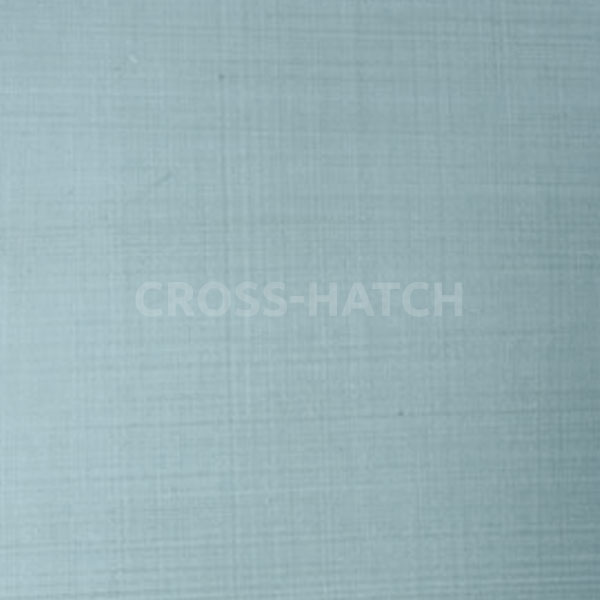
CROSS-HATCH WATCH DEMOSTRATIONGives you a that faux linen look. Brush strokes should be up-and-down (vertical) and side-to-side (horizontal). Let the paint dry between varying strokes.
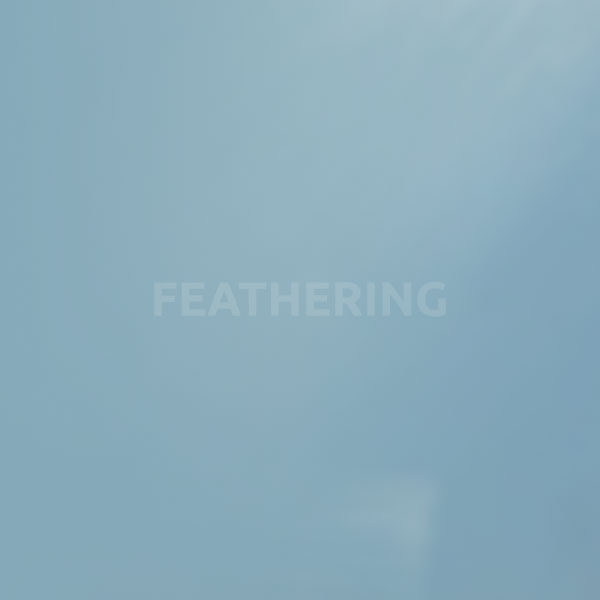
FEATHERING WATCH DEMOSTRATIONFor a smoother finish apply very light bristle pressure and gently brush over the paint smoothing out those heavy strokes.
Read more »
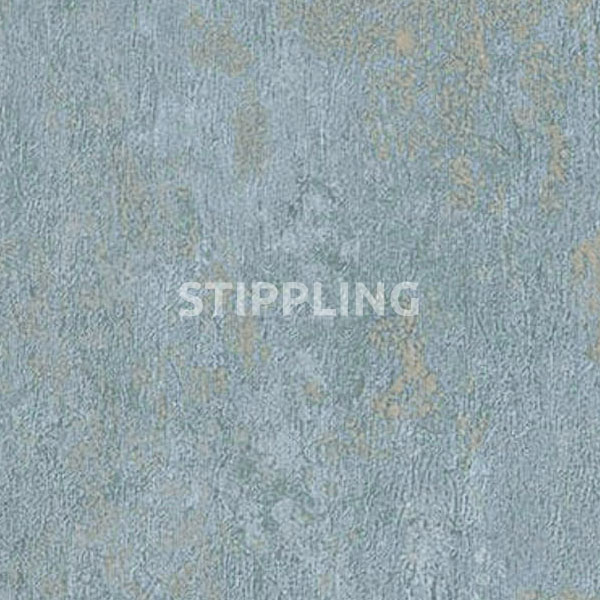
STIPPLING WATCH DEMOSTRATIONAdds physical dimension with low peaks and valleys by painting heavily in a small area and followed up by dabbing the area with the tip of the bristles.
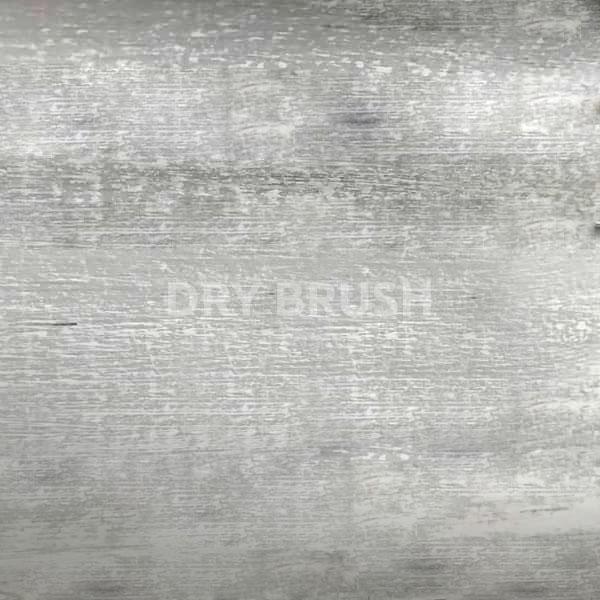
DRY-BRUSH WATCH DEMOSTRATIONAdds a visual dimension using the existing underneath finish. Lightly dip the brush tips with paint removing any excessive paint, then lightly brushing the paint over the surface area
Read more »
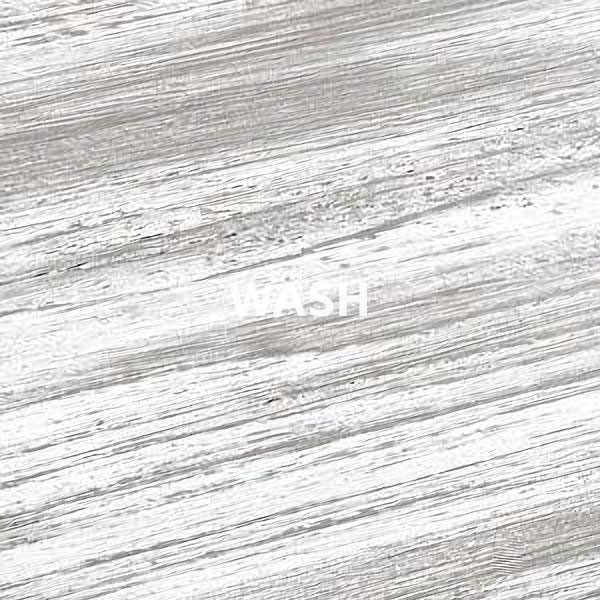
WASH WATCH DEMOSTRATIONDisplays a veil of color over the existing wood surface (i.e. barn wood effect). Thin paint by diluting with water. Apply over the surface and wipe off using a lint-free cloth.
Read more »
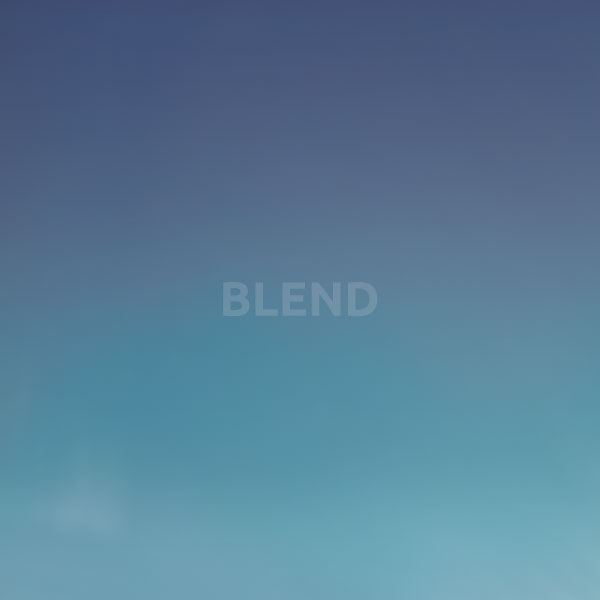
BLEND WATCH DEMOSTRATIONBlending adds dimension and character where 2+ colors meet by lightly moving the paint into the other color. Mist the bristles with water to assist blending the colors.
Read more »
Remember that each of these techniques will require practice to master, so don't be discouraged if your first attempt doesn't turn out exactly as you hoped. With practice, you'll be able to achieve a wide range of distinct and textured looks by applying any of these brushing techniques.
Distress: Achieving That Worn & Used Look
Definition: give simulated marks of age and wear
For achieving an authentic traditional look it’s important to think about the areas that would likely receive the most wear and tear from daily and extended use. Generally those areas would be edges, corners, high spots, and horizontal areas.
Watch Tutorial
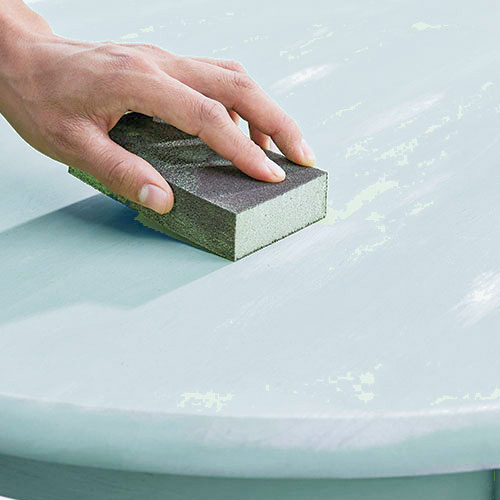
DRY DISTRESS WATCH DEMOSTRATION
Overview: Using a medium (150) to fine (220) grit sand paper or sanding block, apply light pressure to the surface area. You can always go back and distressed those areas with more sanding as needed. You’ll want to hit those edges, corners and high spots that would naturally be affected from normal use to achieve the aged look. If you do happen to make a mistake you can easily touch up the area with more paint.STEPS
- Apply one coat and let paint dry completely.
- Add additional coats as desired, allowing each coat to dry before before applying the next.
- Begin with 180 grit sandpaper lightly go over the surface areas you wish to remove paint. Apply more or less pressure for desired look.
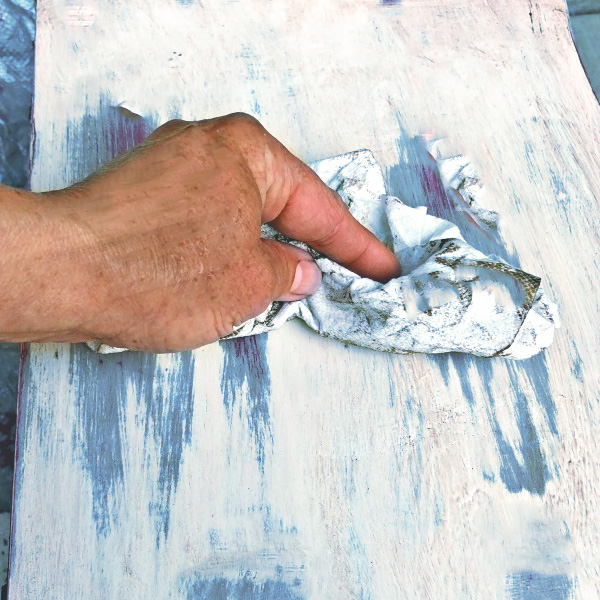
WET DISTRESS WATCH DEMOSTRATION
Overview: This technique is ideal when layering colors. It can be used to create a more natural looking worn effect. Wet distress works best after the second layer of paint color has been applied and dry to the touch (30-90 minutes). You’ll need a bucket of water and a lint-free cloth or scouring pad. The cloth should be wet, but not soaking/dripping wet. Gently rub the cloth across the surface in a back-and-forth motion with a little pressure at first and then apply more if needed to remove paint. You can distress the edges as well as the flat surfaces for the worn effect you desire.STEPS
- Apply one coat and let paint dry completely.
- Apply the next coat in a different color and let dry for 30-90 minutes.
- Remove the top color with a damp lint-free cloth focusing on corners, edges and raised surface areas.
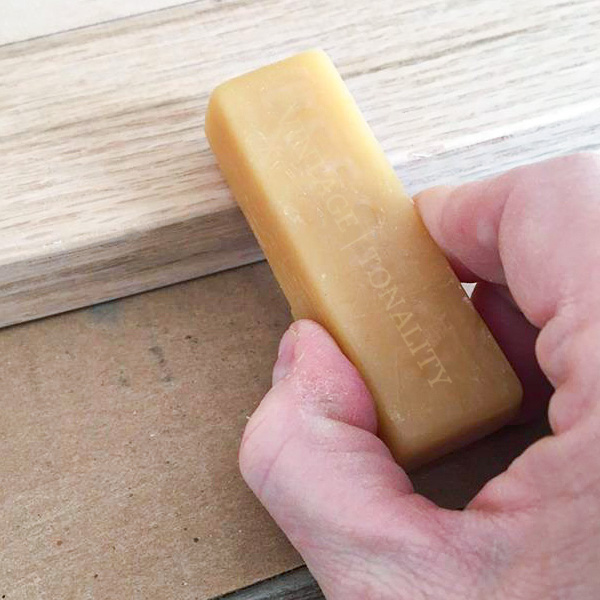
THE 'RESIST' TECHNIQUE WATCH DEMOSTRATION
Overview: For the this technique you’ll want to use a natural (bee) wax, petroleum jelly, or candle wax. When applied to painting surface areas it will act as a resistance to the paint. For a natural look you will first want to apply or rub some of the edges, corners and raised surface spots. The wax is going to resist the second layer of paint in those places and the paint will come off easily when you begin lightly distressing with a wet cloth or sanding block. If you make a mistake and applied to much to a specific area you can use Mineral Spirits on a lint-free cloth to remove the excess.STEPS
- Apply base coat and allow to dry for a minimum of 24 hours.
- Apply (rub) the resisting agent over the areas you wish for the paint to show through your top coat of paint. Focus on edges, corners and raised up areas.
- Apply a second (top) coat over your base layer and allow to dry for 1-2 hours.
- With a damp lint-free cloth and/or fine grit sand paper go over the areas where the resisting agent was applied to remove paint.
How to: How To Distress Chalk Painted Furniture
Another easy to follow tutorial on distressing by DIY Deanna.
~ DIY Deanna
More: Articles + Guides
How To Chalk Paint Furniture Transform your furniture into beautiful vintage-inspired pieces with this step-by-step guide on how to chalk paint furniture.
How To Distress Furniture In this comprehensive guide, we'll walk you through the process of distressing furniture with chalk paint, from start to finish.
Priming Before Chalk Painting Understanding the pros and cons of priming before chalk painting furniture and understanding bleed-through solutions.
White Wash With Chalk Paint Whitewashing with chalk paint is a great way to create a fresh, rustic look that will make your furniture piece stand out.
Dry Brush With Chalk Paint A technique used with chalk paint to create a beautiful, textured finish that gives furniture and decorative items an aged, vintage look.
© 2015 - 2024
Vintage | Tonality® ~ All rights reserved. Any unauthorized use, such as distributing, copying, modifying, or reprinting, is not permitted.
Rev. 4/25/2024
Site content protected by: Digital Millennium Copyright Act
VIDEO |
PAINTING 101 |
GETTING STARTED |
TECHNIQUES |
ARTICLES




